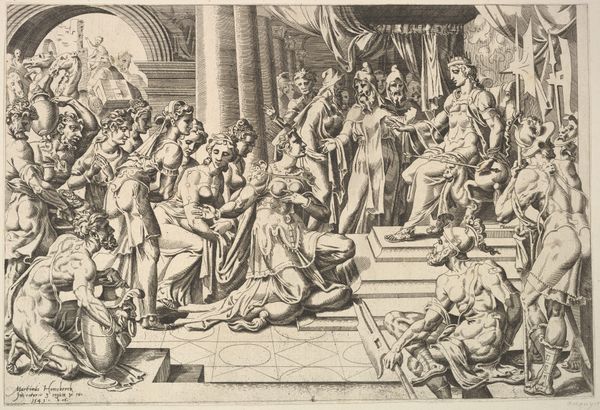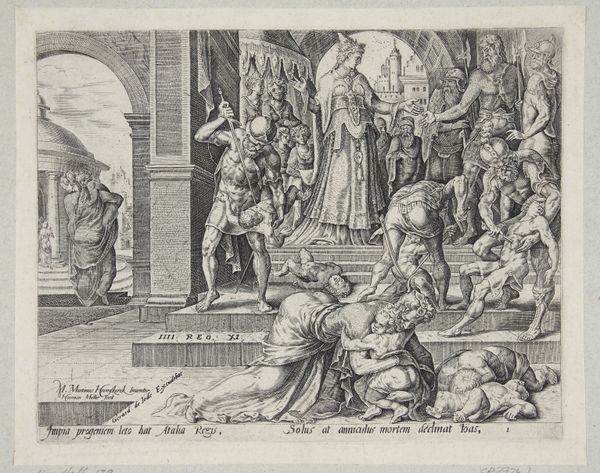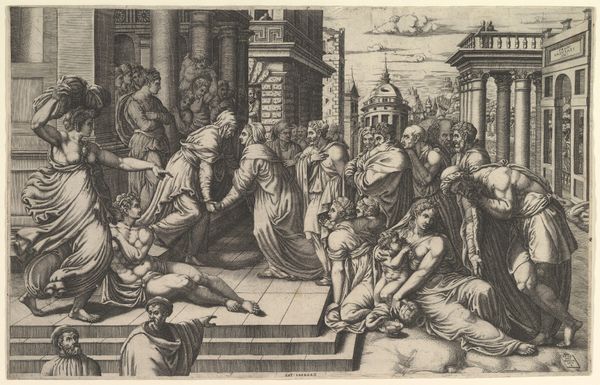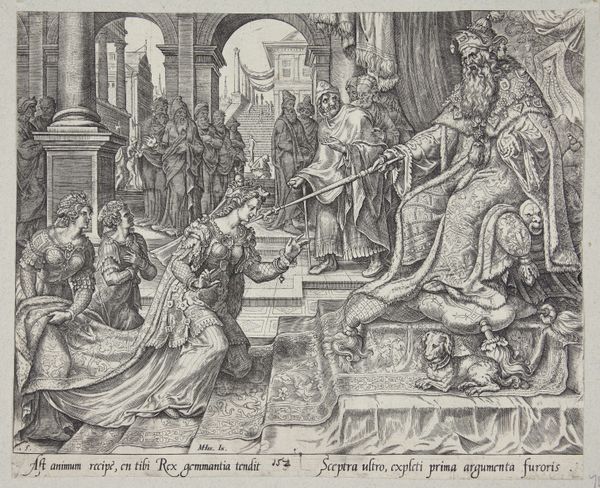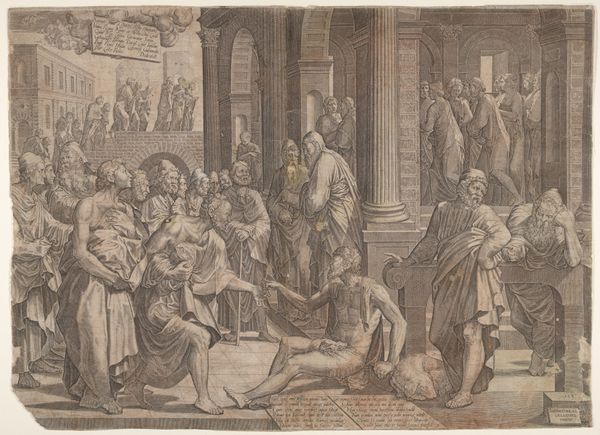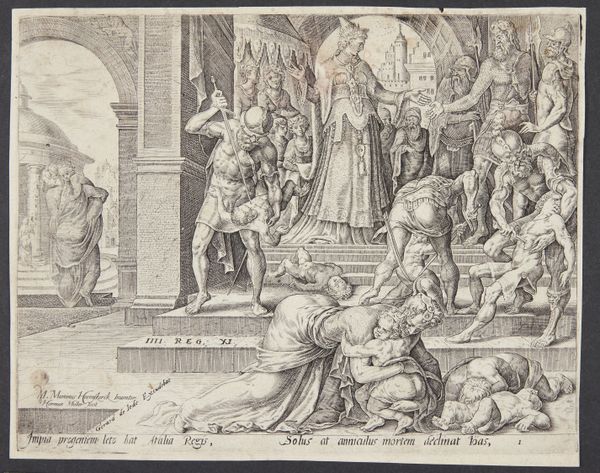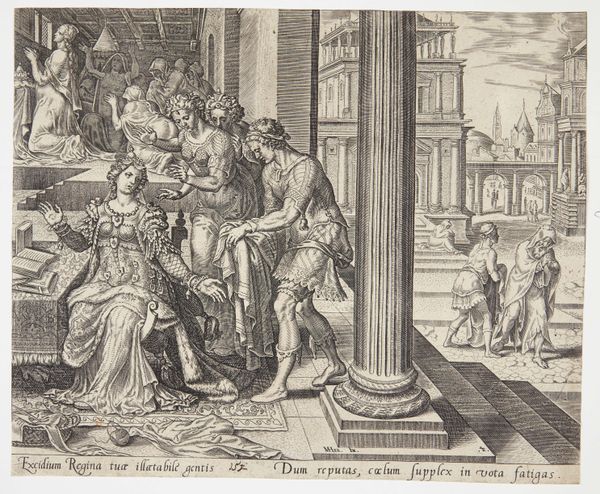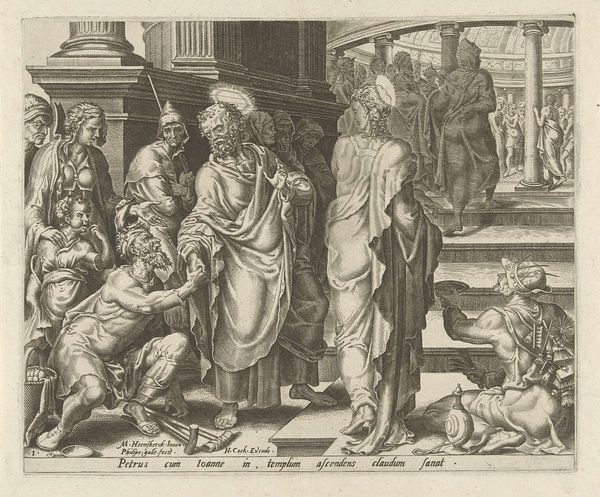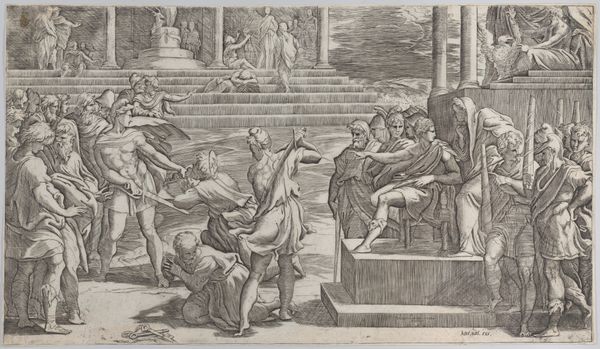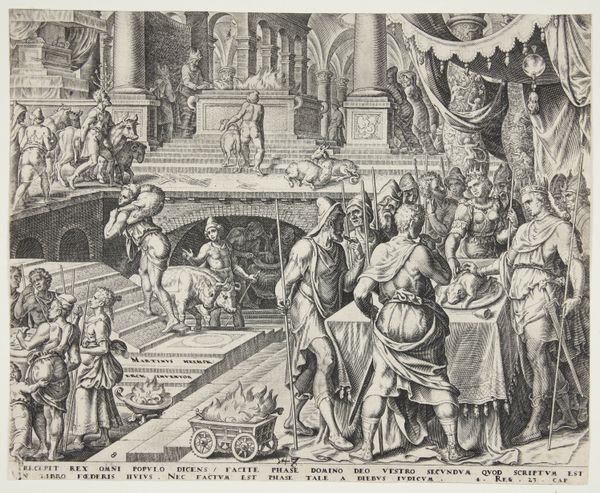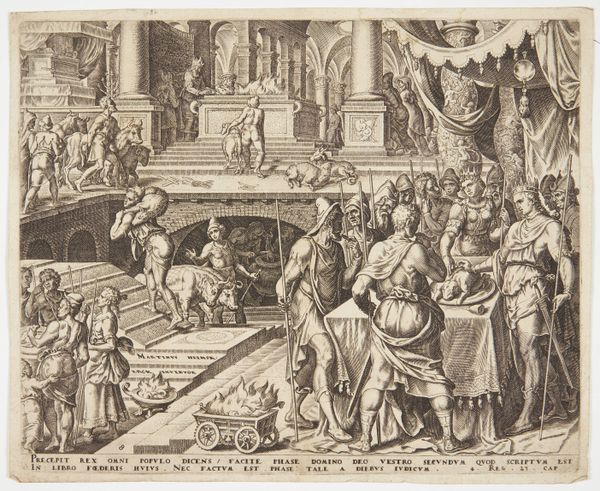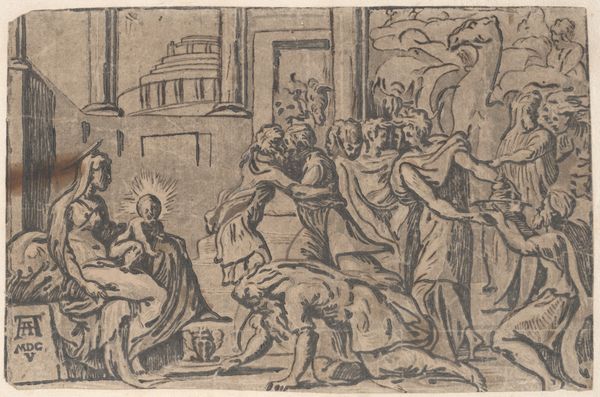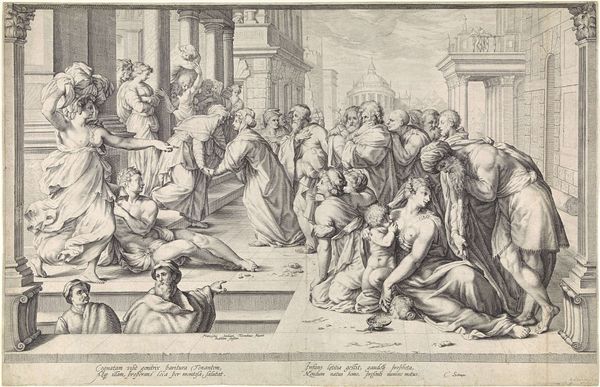
drawing, print, engraving
#
drawing
#
pen drawing
# print
#
figuration
#
line
#
history-painting
#
academic-art
#
italian-renaissance
#
engraving
Dimensions: Sheet (trimmed): 10 1/4 × 14 13/16 in. (26 × 37.6 cm)
Copyright: Public Domain
Editor: This is "Solomon and the Queen of Sheba," a 16th-century engraving now at the Met. There is such detailed line work for a black and white piece, but the arrangement feels unbalanced, almost theatrical. How would you interpret this work? Curator: Given the period, the theatricality aligns with the political function of art at the time. Consider the staging: Solomon is elevated, literally and metaphorically. How does this physical positioning reinforce his power, especially in the context of representing a visiting dignitary like the Queen of Sheba? Editor: It definitely puts him in a dominant position, and he’s surrounded by men who seem to be advisors or guards. It makes Sheba seem almost like a supplicant, even though the story is about her wealth and wisdom. Curator: Precisely! The image participates in a broader discourse about power dynamics. Think about how depictions of biblical rulers like Solomon, often commissioned by European monarchs, served to legitimize their own rule, projecting an image of divinely sanctioned authority. Are there any visual cues in the depiction that might suggest contemporary anxieties or power struggles? Editor: Now that you mention it, Solomon looks European and very muscular for a King known for his wisdom, maybe a subtle flex by whoever commissioned the print? Curator: Exactly. These kinds of depictions, though seemingly straightforward historical narratives, are deeply embedded in the socio-political contexts of their time. They are not just illustrations, but statements about cultural and political ideologies. Editor: This gives me a completely different lens to see how historical and political conditions influenced its creation, moving past my initial, more aesthetic judgements. Curator: And that's how we can understand art as an active participant in history rather than a passive reflection of it.
Comments
No comments
Be the first to comment and join the conversation on the ultimate creative platform.
